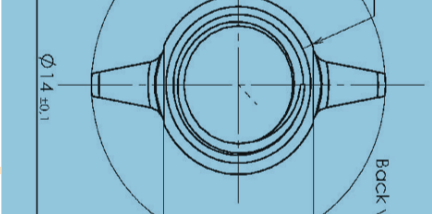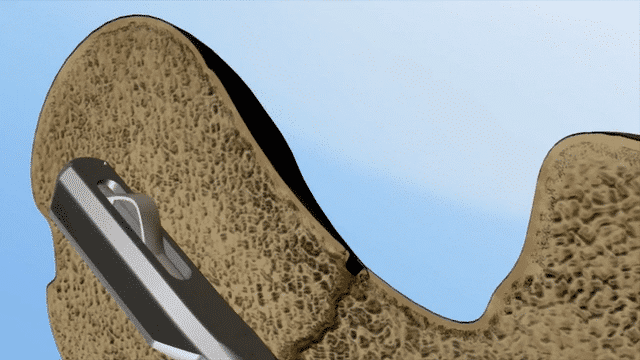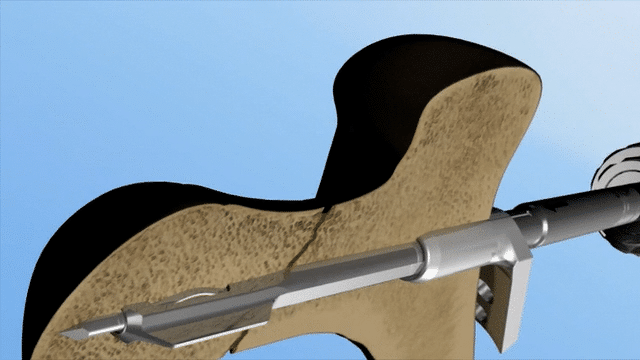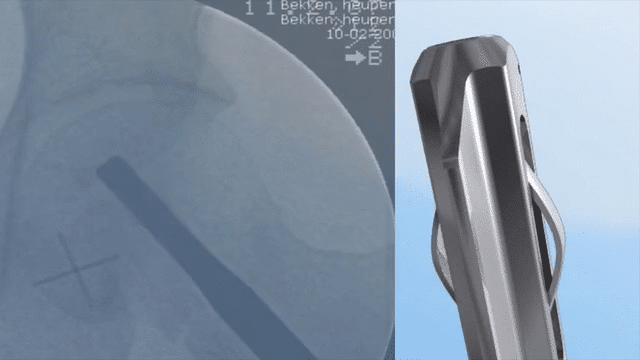
The basic requirements for optimal fracture healing are repositioning of the fracture, providing stability and compression and preservation of blood supply. The femoral neck fracture is vulnerable; fixation yields high re-interventions rates, up to 33%1,2. The small volume Gannet fixation system offers optimal stability for the femoral neck fracture, thus creating optimal conditions for primary bone healing and (re-) vascularization, resulting into significantly lower re-intervention rates.
For patients

Low volume implant provides maximum space for bone and vascularization
Gannet is a low volume implant when compared to round or screw-in implants
The use of flanges rather than round structures helps reducing implant volume while increasing load carrying capacity
Low volume means more space for bony structures
Gannet on TV.
“We are very satisfied with the easy surgical technique, the rotational stability and the excellent clinical results of the Gannet”





